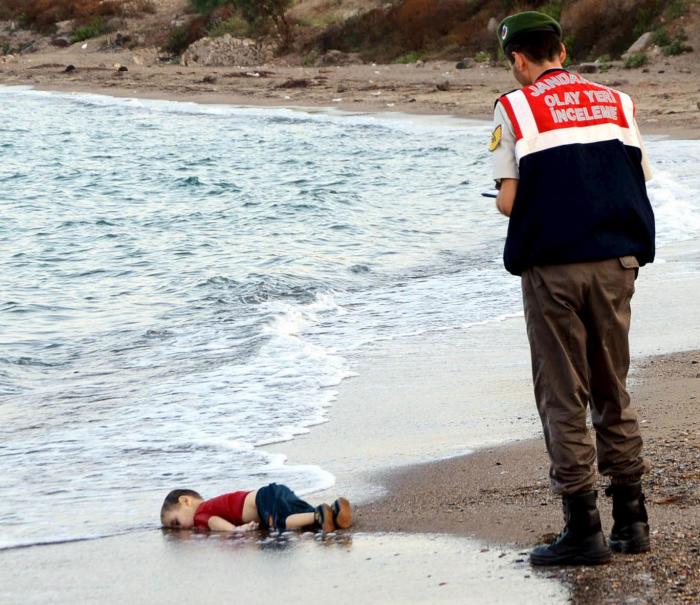
A young Syrian boy lies in the surf near Bodrum, Turkey Reuters
The President issued an “Executive Order” on January 27. The Order purports to bar from the United States citizens of eight nations. Nominally, fo 90 days but really indefinitely. And the Order suspends refugee admissions for 120 days.
Never mind that the United States has an incredibly rigorous refugee admission process. No refugee has committed a terrorist act in the United States.
Interestingly, the Order opens with a bloody flag argument, pointing to 9/11. But the list of countries whose citizens are banned doesn’t include Saudi Arabia, the nationality of the majority of the aircraft highjackers. The justification for the Executive Order, then, isn’t addressed by the actual prohibitions imposed by the Executive Order.
More importantly, U.S. law specifically prohibits both preference and discrimination in immigration. 8 U.S.C. §1152(a)(1) provides:
Except as specifically provided in paragraph (2) and in sections 1101(a)(27), 1151(b)(2)(A)(i), and 1153 of this title, no person shall receive any preference or priority or be discriminated against in the issuance of an immigrant visa because of the person’s race, sex, nationality, place of birth, or place of residence.[^1]
Let’s first clear up the exceptions in the section. Paragraph 2 of §1152(a) mirrors the next three exceptions, allowing preferences in those narrow areas. It doesn’t make the President’s edict legal. §1101(a)(27) involves “special immigrants,” folks who get preferred treatment by law. It doesn’t make the President’s edict lawful. §1151(b)(2)(A) involves immediate relatives of immigrants. It doesn’t make the President’s edict lawful. §1153 grants preferences to relatives of lawful immigrants and persons with desired skills. It doesn’t make the President’s edit lawful.
The bottom line, then, is that President Trumps Order violates U.S. law. The Order itself claims it is authorized by the “Immigration and Nationality Act (INA), 8 U.S.C. 1101 et seq., and section 301 of title 3, United States Code.”
We’ve already seen that the INA forbids, not authorizes President Trump’s actions.
3 U.S.C. §301 authorizes the President to delegate his authority. It doesn’t grant him authority; only to delegate authority he already has. So it doesnt authorize the President to ignore §1152(a)(1), either.
So President Trump’s January 27, 2017 executive order is illegal; it’s made in violation of federal law. The President has broad authority to implement Congressional action or treaties. But not to violate the law. It’s that checks and balances thing again.
WC is uncertain whether President Trump thinks he is a dictator and can do however he wants, or if he is simply ignorant of the law and signs anything put in front of him. Or if he is a mere puppet for the openly racist ideas of his chief advisor, Steve Bannon.
And let’s not lose sight of the consequences of the President’s actions. Still more Syrian refugees will die.
But the Executive Order won’t last long in front of the first court to see it.
UPDATE: After this blog post was written, Y.S. District Judge Ann M. Donnelly issued a temporary restraining order, barring the United States from enforcing certain aspects of the Executive Order. Congratulations to the ACLU for its prompt and effective action.



You must be logged in to post a comment.